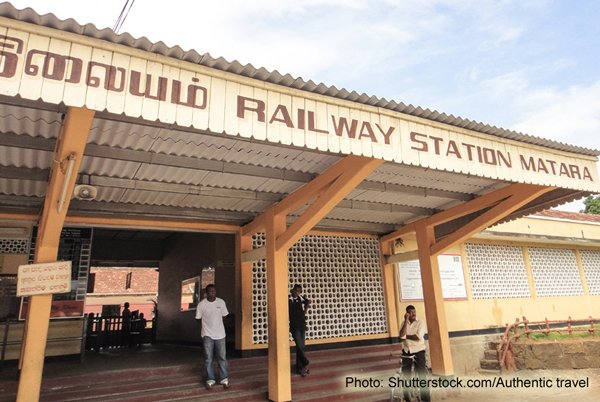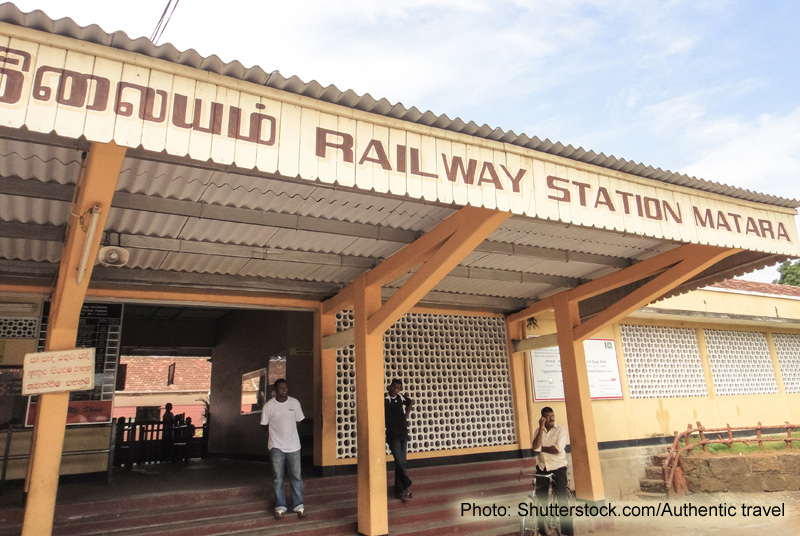BRI-backed Rail Link Set to Transform Sri Lanka's Transport Network
Massive China-funded coastal rail project tipped to boost Sri Lanka's logistics and tourism industries.

Work is now well underway on first phase of Sri Lanka's long-mooted coastal rail link, with much of the funding stemming from the Belt and Road Initiative, China's ambitious international infrastructure development and trade facilitation programme. With the cost estimated at around US$278 million, the project – the Matara-Kataragama Railway – will eventually stretch across 114.5km and is the first new rail line to be constructed in Sri Lanka since the country gained its independence in 1948.
Once it is completed, it is hoped the line will stimulate growth in the industrial and tourism economies of southern Sri Lanka, while also providing a much-needed transport link for local communities. It will also breathe new life into Matara station, which was built back in 1895 and is currently the terminus for services running from Colombo Port, the country's central business district, and Galle, the administrative capital of the country's Southern Province. Until now, however, there has been no rail service extending any further east.
With Sri Lanka seen as a priority link in the BRI network, given the strategic advantages of its port facilities, China was quick to back the Sri Lankan Ministry of Transport & Civil Aviation's plans to revitalise the country's transport infrastructure. To this end, the project is being bankrolled by the state-owned Export-Import (Exim) Bank of China, while construction work is being undertaken by the China Railway Group in association with the China National Machinery Import and Export Corporation.
It is envisaged that the project will be developed in three distinct phases, with the first – the 26.75km Matara-Beliatta line – scheduled to be finished by October. Work on this initial section will require the completion of two bridges and viaducts in order to span the Nilwala River and the Wehella flood plains. It will also require the construction of the country's longest railway tunnel, which will run to some 616 metres.
At 48km, the second phase is almost twice as long and will run from the southern town of Beliatta to Hambantota, a port city already benefitting from substantial BRI investment. Under a deal agreed last year, China Merchants Port Holdings has been granted a 99-year concession to develop and manage the commercial operation of the city's deep-water port, as well as the nearby Sri Lanka-China Logistics and Industrial Zone.
The third and final stage of the new rail link will run to some 39.5km. This will see the line head inland from Hambantota, before terminating at Kataragama, one of the country's most popular tourist destinations.
The development of the coastal line was triggered by the need to establish an integrated national transport network in order to fully capitalise on the BRI-sponsored upgrades to the country's marine and air freight facilities. Without such a move, it was believed Sri Lanka would miss out on a raft of economic benefits, while also failing to attract increased overseas investment.
It's certainly true that the country's existing rail network falls way short of being able to handle any significant increase in freight transportation. Perennially loss-making, Sri Lanka Railways has long been seen as under-invested, under-utilised and technologically backwards. As a consequence, rail accounts for only 5% of the national passenger transport market, having fallen from 7% in 2011.
The national rail operator, however, believes that it could boost its passenger market share to 25% in certain regions, but only by increasing train frequency and improving overall service levels. Prior to China's intervention, the funding for such a transformation seemed unlikely to materialise.
As an additional benefit, the new line is also expected to play a key role in further developing the country's already burgeoning tourism sector. In 2017, the country welcomed 2.12 million overseas visitors, a substantial increase on the 1.27 million arrivals recorded for 2013. With many such tourists bound for the legendary beaches in the south of the country, the new line will inevitably prove one of the primary conduits for this ever-increasing number of sun-seekers.
Overall, tourism is now Sri Lanka's third-largest source of foreign exchange earnings, after remittances from migrant workers and the textiles sector. With the number of annual visitors expected to hit 4.5 million by 2020, the rail line is also seen as one of the prime links in the required supply chain.
Geoff de Freitas, Special Correspondent, Colombo





